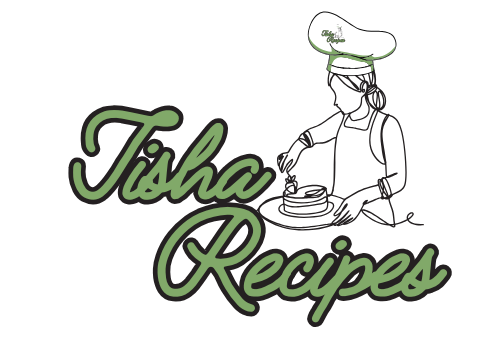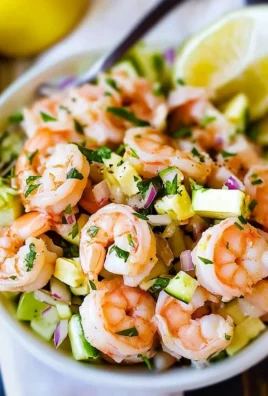
Wild rice pilaf is a wholesome, hearty dish celebrated for its nutty flavor, chewy texture, and versatility. Unlike conventional white or brown rice, wild rice is technically a semi-aquatic grass native to North America. Its unique taste and nutritional profile have made it a staple in cuisines around the world.
This dish is a blend of cooked wild rice, aromatic vegetables, and flavorful broth, often elevated with dried fruits, nuts, and fresh herbs. Whether served as a standalone meal or a side dish, wild rice pilaf is perfect for casual dinners, festive occasions, or meal prepping. Its adaptability allows for endless variations, ensuring there’s a version to suit every palate.
Overview of Wild Rice Pilaf
At its core, wild rice pilaf is a medley of ingredients that balance taste, texture, and aroma. The earthy flavor of wild rice pairs beautifully with the sweetness of dried fruits, the crunch of toasted nuts, and the savory depth of broth-infused vegetables. The dish is naturally gluten-free, making it a great choice for those with dietary restrictions.
Wild rice pilaf is often associated with festive meals, as it complements roasted meats, seafood, or vegetarian entrees. Its vibrant colors and rich flavors make it an eye-catching addition to any table.
Brief History and Cultural Significance
Origins of Wild Rice
Wild rice has been cultivated and harvested by Native American tribes for centuries, particularly in regions around the Great Lakes. Known as “manoomin” in the Ojibwe language, wild rice held immense cultural, nutritional, and spiritual importance. Tribes gathered it using traditional methods, such as canoeing through rice beds and knocking grains into their vessels.
Evolution of Pilaf
The concept of pilaf dates back to ancient Persia, where rice was cooked with spices, meat, and vegetables. Over time, this cooking style spread across the Middle East, Central Asia, and Europe, evolving into various forms, including Indian biryani and Spanish paella. The incorporation of wild rice into pilaf reflects a blend of indigenous North American ingredients with global culinary traditions.
Preparation Phase and Tools to Use
Essential Tools and Equipment
Before starting, ensure you have the following tools to simplify the cooking process:
- Saucepan with Lid: A heavy-bottomed saucepan helps distribute heat evenly and prevents sticking.
- Rice Cooker (Optional): Ideal for hands-free cooking, especially for beginners.
- Cutting Board and Knife: Essential for chopping vegetables and herbs.
- Measuring Cups and Spoons: To ensure precise proportions of rice, broth, and seasonings.
- Wooden Spoon or Spatula: Gentle on cookware and great for stirring ingredients without scratching.
Importance of Preparation
Preparation is key to achieving a perfectly cooked pilaf. This includes washing and soaking the rice, chopping vegetables uniformly, and measuring ingredients in advance. Proper preparation ensures even cooking and enhances the final dish’s flavor and texture.
Preparation Tips
Selecting the Wild Rice
- Quality Matters: Choose premium-grade wild rice for a consistent texture and flavor. Look for grains that are firm, dark, and uniform in size.
- Blends vs. Pure Wild Rice: While blends containing wild rice and other grains are available, pure wild rice offers a more robust flavor.
Washing and Soaking
- Rinse Thoroughly: Place the rice in a fine-mesh sieve and rinse under cold water to remove excess starch. This prevents the rice from becoming sticky.
- Soaking Benefits: Soak the rice for 30 minutes to an hour before cooking. Soaking shortens the cooking time and ensures the grains cook evenly.
Choosing the Right Broth
- Opt for a broth that complements your add-ins and main course.
- Vegetable Broth: Best for vegetarian and vegan versions.
- Chicken or Beef Broth: Adds depth and richness to the pilaf.
- Homemade broth enhances the dish’s flavor compared to store-bought options.
Balancing Add-Ins
- Limit add-ins to avoid overpowering the rice’s flavor.
- Dried fruits like cranberries or apricots add sweetness, while nuts like almonds or pecans provide crunch.
- Fresh herbs such as parsley, thyme, or rosemary enhance aroma and visual appeal.
Ingredients List
Core Ingredients
- Wild Rice: 1 cup, rinsed and drained.
- Vegetables: A mix of diced onion, celery, and carrots (½ cup each).
- Garlic: 2 cloves, minced.
- Broth: 2 cups (vegetable, chicken, or beef).
- Herbs: 1 bay leaf, 1 teaspoon dried thyme, and freshly chopped parsley for garnish.
- Olive Oil or Butter: 2 tablespoons for sautéing.
Optional Add-Ins
- Dried Fruits: Cranberries, raisins, or chopped apricots.
- Nuts: Toasted almonds, pecans, or walnuts.
- Seasonings: A pinch of cinnamon, nutmeg, or smoked paprika for unique flavor profiles.
- Citrus Zest: Lemon or orange zest for brightness.
Step-by-Step Instructions
Step 1: Preparing the Wild Rice
- Rinse and Soak: Wash the wild rice under cold water, then soak it for 30 minutes to an hour. Drain and set aside.
- Measure Broth: Warm the broth in a separate saucepan or microwave for quicker absorption during cooking.
Step 2: Sauté Aromatics
- Heat olive oil or butter in a large saucepan over medium heat.
- Add the diced onion, celery, and carrots. Sauté for 5-7 minutes until softened.
- Stir in minced garlic, thyme, and bay leaf. Cook for another minute until fragrant.
Step 3: Cooking the Rice
- Add the soaked and drained wild rice to the saucepan. Stir well to coat the grains with the aromatic mixture.
- Pour in the warm broth and bring to a boil.
- Reduce the heat to low, cover, and simmer for 40-50 minutes, or until the rice is tender and has absorbed most of the liquid.
Step 4: Incorporating Add-Ins
- Remove the saucepan from heat and discard the bay leaf.
- Stir in dried fruits and nuts, adjusting the quantity to taste.
- Season with salt and freshly ground pepper.
Step 5: Final Touches
- Fluff the pilaf with a fork to separate the grains.
- Transfer to a serving dish and garnish with fresh parsley and optional citrus zest.
Enhancements and Benefits of Wild Rice Pilaf
Side Dish Recommendations
Wild rice pilaf is a versatile dish that complements a wide array of main courses. Its nutty flavor and hearty texture make it an ideal pairing for both vegetarian and meat-based meals. Here are some excellent dishes to serve alongside wild rice pilaf:
1. Roasted Chicken
The savory and crispy skin of roasted chicken contrasts beautifully with the chewy texture of wild rice pilaf. A simple herb-roasted chicken seasoned with garlic, thyme, and rosemary pairs exceptionally well.
2. Grilled Salmon
Grilled salmon, with its rich and smoky flavor, is a perfect match for the earthy tones of wild rice. Adding a squeeze of lemon over the salmon enhances the entire meal, balancing the flavors.
3. Stuffed Bell Peppers
Wild rice pilaf can be used as a stuffing for bell peppers, creating a colorful and healthy main course. Adding chopped nuts or cheese to the pilaf stuffing enhances both taste and presentation.
4. Vegetarian Curries
Pair wild rice pilaf with creamy curries like lentil dal, chickpea masala, or vegetable korma. The neutral base of the pilaf absorbs the rich, spiced flavors of the curry.
5. Braised Short Ribs
The hearty nature of braised short ribs is perfectly complemented by the nutty and chewy texture of wild rice pilaf. A red wine reduction sauce served over the ribs ties the dish together beautifully.
6. Grilled Vegetables
Serve wild rice pilaf alongside grilled zucchini, asparagus, or eggplant for a wholesome, plant-based meal. The smokiness of the vegetables enhances the natural flavors of the pilaf.
7. Creamy Soups
Pair wild rice pilaf with creamy soups like butternut squash or mushroom soup for a cozy, comforting meal. The pilaf’s hearty texture provides a satisfying contrast to the smooth, velvety soup.
8. Herb-Crusted Lamb Chops
The bold, savory flavors of herb-crusted lamb chops are an excellent match for the earthy and nutty tones of wild rice pilaf. A touch of mint jelly on the side can elevate the pairing.
Nutritional Information and Health Benefits
Wild rice pilaf is not only delicious but also packed with nutrients that make it a healthy choice for any meal. Let’s explore the nutritional highlights and health benefits of this dish.
Nutritional Highlights
- Wild Rice:
- High in protein, making it an excellent option for vegetarians.
- Rich in dietary fiber, which supports digestive health.
- Contains essential minerals like magnesium, phosphorus, and zinc.
- Vegetables:
- Onions, celery, and carrots add vitamins A, C, and K.
- These vegetables also contribute antioxidants that combat free radicals.
- Nuts and Dried Fruits:
- Almonds, pecans, and dried fruits like cranberries provide healthy fats and natural sugars.
- These ingredients boost energy levels and add beneficial micronutrients.
- Olive Oil or Butter:
- Healthy fats from olive oil support heart health.
- Butter, when used in moderation, offers fat-soluble vitamins like A and D.
Health Benefits
- Supports Weight Management: The fiber in wild rice promotes feelings of fullness, helping to control appetite.
- Gluten-Free Option: Wild rice is naturally gluten-free, making it suitable for individuals with celiac disease or gluten sensitivities.
- Boosts Energy Levels: The carbohydrates in wild rice provide sustained energy without spikes in blood sugar.
- Promotes Heart Health: The antioxidants and magnesium in wild rice contribute to a healthy cardiovascular system.
- Improves Digestion: The high fiber content aids in regulating bowel movements and maintaining gut health.
Common Mistakes to Avoid and How to Perfect the Recipe
While wild rice pilaf is a relatively straightforward dish to prepare, there are a few pitfalls to watch out for. Here are the most common mistakes and tips for avoiding them.
Mistake 1: Overcooking the Wild Rice
Overcooking wild rice can lead to a mushy texture, ruining the dish’s integrity.
Solution:
- Use a timer to monitor cooking time.
- Check the rice for doneness after 40 minutes. It should be tender but slightly chewy.
Mistake 2: Using Water Instead of Broth
Cooking wild rice in plain water results in a bland pilaf.
Solution:
- Always use a flavorful broth, such as vegetable, chicken, or beef.
- For an extra layer of flavor, simmer the broth with herbs before adding it to the rice.
Mistake 3: Skipping the Soaking Step
Neglecting to soak wild rice can lead to uneven cooking.
Solution:
- Soak the rice for at least 30 minutes before cooking.
- Soaking softens the outer layer, ensuring the grains cook evenly.
Mistake 4: Overloading the Pilaf with Add-Ins
Adding too many ingredients can overshadow the rice’s natural flavor.
Solution:
- Limit the number of add-ins to 2-3 complementary ingredients, such as nuts and dried fruits.
- Choose flavors that enhance rather than overpower the wild rice.
Mistake 5: Forgetting to Season Properly
Insufficient seasoning can leave the pilaf tasting flat.
Solution:
- Season each layer as you cook—add salt and pepper to the vegetables, broth, and finished pilaf.
- Adjust seasoning to taste before serving.
Mistake 6: Not Fluffing the Rice
Neglecting to fluff the rice can result in clumpy pilaf.
Solution:
- Use a fork to fluff the rice gently after cooking.
- Avoid stirring vigorously, as this can break the grains.
Tips, Notes, and Final Touches for Wild Rice Pilaf
Tips for Perfect Wild Rice Pilaf
To make your wild rice pilaf flawless, consider the following expert tips:
- Rinse Thoroughly: Always rinse wild rice under cold water to remove excess starch. This step ensures the grains remain separate and do not clump together during cooking.
- Balance Flavors: The nutty flavor of wild rice is complemented by a balance of savory and sweet ingredients. Add a pinch of salt to enhance the overall taste, and consider contrasting the nuttiness with dried fruits or a touch of citrus.
- Use High-Quality Broth: Broth is a key component that infuses flavor into the rice. Opt for homemade broth whenever possible, as it has a richer taste than store-bought varieties.
- Add Texture: Incorporate a mix of textures like crunchy nuts, chewy dried fruits, or tender sautéed vegetables for a satisfying bite.
- Season in Layers: Seasoning at each stage of the cooking process ensures the dish is well-rounded and flavorful.
Notes on Customizing Wild Rice Pilaf
Dietary Adaptations
- Vegan Version: Use vegetable broth and olive oil instead of butter.
- Low-Sodium: Opt for a low-sodium broth and season lightly with salt.
- Gluten-Free: Wild rice is naturally gluten-free, making this dish suitable for gluten-sensitive individuals.
Creative Variations
- Mediterranean Style: Add sun-dried tomatoes, olives, and crumbled feta cheese.
- Autumn-Inspired Pilaf: Include roasted butternut squash, cranberries, and toasted pecans.
- Spicy Twist: Add diced jalapeños, cayenne pepper, and a squeeze of lime for a bold flavor profile.
- Herb-Forward Pilaf: Highlight fresh herbs like parsley, dill, and chives for a bright, refreshing taste.
Storing and Reheating Wild Rice Pilaf
Storage Tips
- Allow the pilaf to cool completely before storing.
- Transfer the leftovers to an airtight container and refrigerate for up to 4 days.
- For longer storage, freeze the pilaf in freezer-safe bags or containers for up to 3 months.
Reheating Instructions
- Microwave: Place the pilaf in a microwave-safe dish and cover it loosely. Reheat for 1-2 minutes, stirring halfway through to ensure even warming.
- Stovetop: Heat the pilaf in a skillet over medium heat, adding a splash of water or broth to prevent it from drying out. Stir gently until heated through.
- Oven: Spread the pilaf in an oven-safe dish, cover with foil, and bake at 350°F (175°C) for 10-15 minutes.
Freezing and Thawing
- Freezing: Divide the pilaf into individual portions before freezing for easier reheating.
- Thawing: Let the pilaf thaw overnight in the refrigerator before reheating.
Frequently Asked Questions
1. What’s the difference between wild rice and regular rice?
Wild rice is a seed of aquatic grass, while regular rice is a cereal grain. Wild rice has a nuttier flavor and firmer texture, whereas regular rice is softer and milder in taste.
2. Can I make wild rice pilaf in advance?
Yes, wild rice pilaf can be made ahead of time. Prepare the pilaf as instructed, store it in the refrigerator, and reheat it just before serving.
3. Can I substitute wild rice with other grains?
While wild rice has a unique flavor, you can substitute it with quinoa, brown rice, or a wild rice blend for a different texture and taste.
4. How do I keep the pilaf from becoming mushy?
Avoid overcooking the wild rice. Check for doneness after 40-50 minutes and fluff the rice gently with a fork after cooking.
5. Can I omit the dried fruits and nuts?
Yes, dried fruits and nuts are optional. You can customize the recipe based on your preferences or dietary restrictions.
6. Is wild rice pilaf suitable for meal prep?
Absolutely! Wild rice pilaf stores well and reheats easily, making it an excellent option for meal prepping. Divide the pilaf into portions and refrigerate or freeze for quick, ready-to-eat meals.
Conclusion
Wild rice pilaf is a delightful dish that brings together nutty wild rice, aromatic vegetables, and a variety of flavorful add-ins. Its versatility allows it to shine as both a side dish and a standalone meal. Whether you’re preparing a festive holiday feast or a quick weeknight dinner, wild rice pilaf is a recipe worth mastering.
From its roots in Native American cuisine to its global adaptations, wild rice pilaf showcases the beauty of combining simple ingredients into something extraordinary. With endless customization options, it’s a dish you can tailor to suit any occasion.
Take the time to experiment with different flavors, textures, and cooking methods. Once you’ve made this recipe your own, it’s sure to become a cherished part of your culinary repertoire.




Leave a Comment